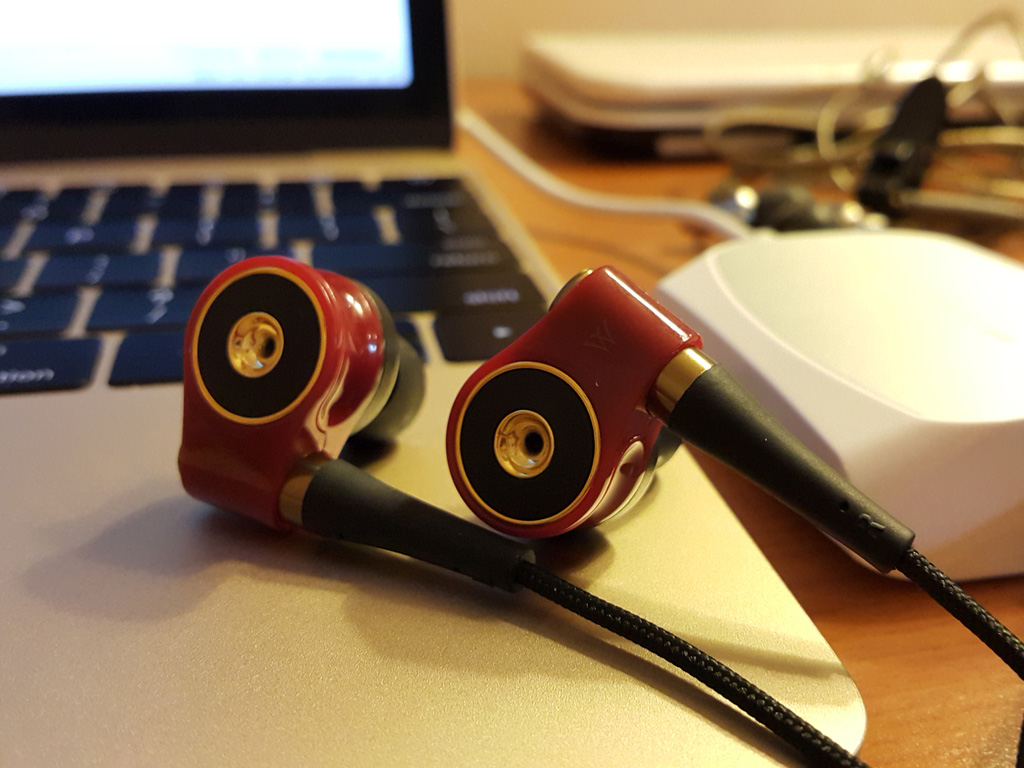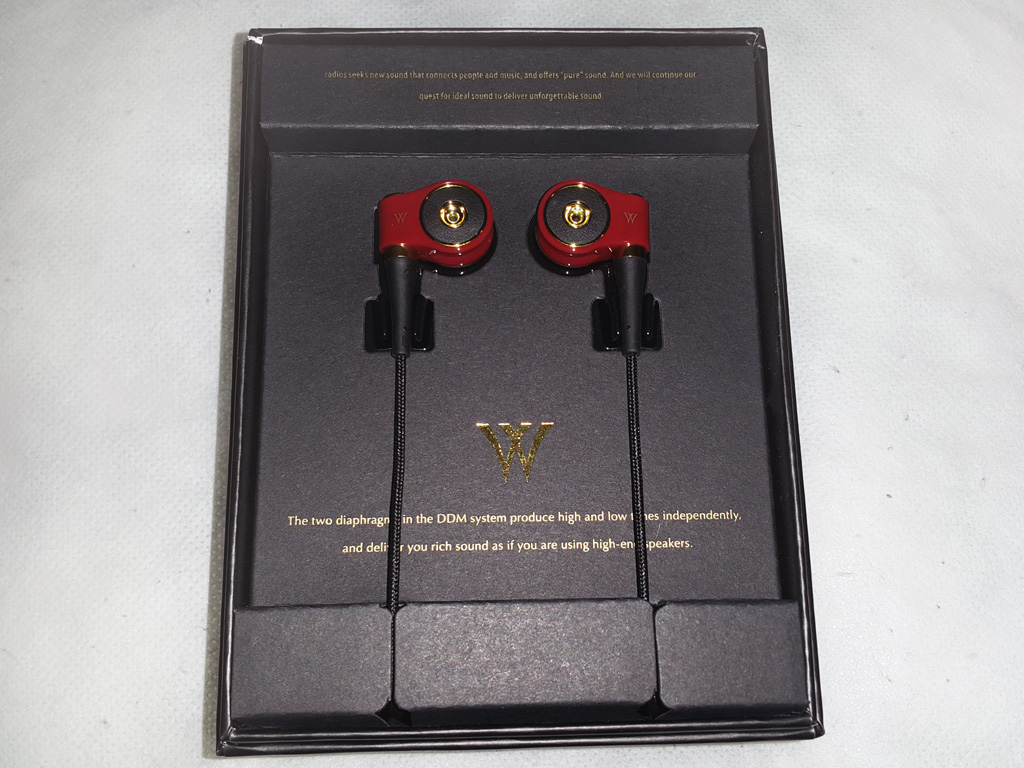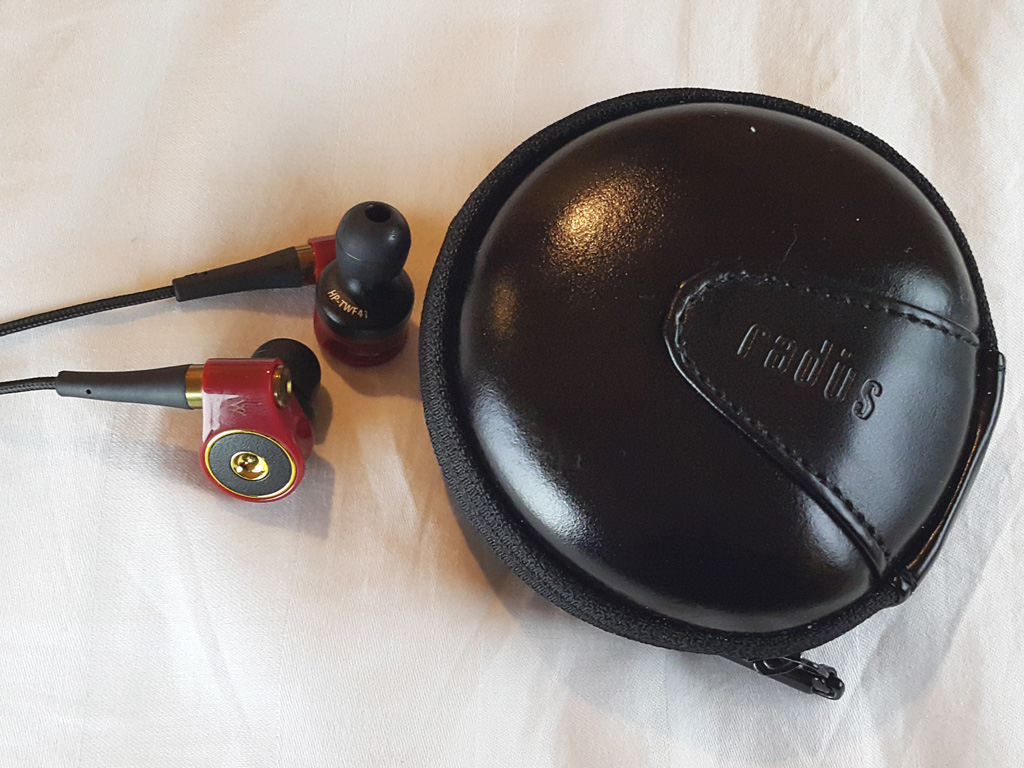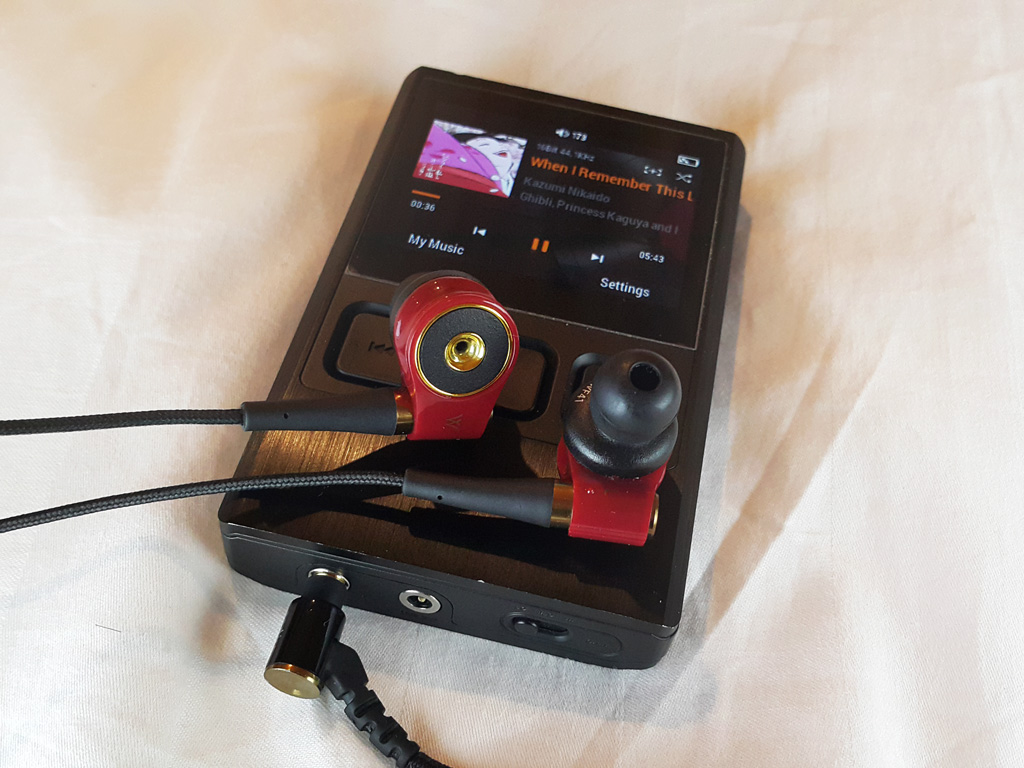
Radius as a company is probably not widely known among audiophiles, unless if you are based or have visited Japan, chance are, you won’t find their products in stores near you. Their history actually started in United States on May 1986 as a subsidiary of Apple. In 1991, the company expanded to Japan. Not long after that, in 1996, the Japanese branch became independent and separated from their United States origin. Since then, the Japanese Radius has been focused on making peripheral for Apple devices and also on home and portable audio market. The United States branch however, changed their name to Digital Origin, allowing the Japanese company to keep the Radius name today. Quite a journey, eh?
The current product lines of Radius consisted of home and portable DAC and amplifier, earphones, the digital audio player software called NePLAYER and some other accessories for Apple and Android devices. What I’m interested in is their audio product of course, in the case of IEM, Radius has covered the market from the bottom into the mid-fi range.
Their highest-end IEM is unique that they have Dual Diaphragm Matrix (DDM) driver, possibly the first that combine dynamic and piezoelectric driver in each side of the IEM. That current lineup consisted of two identical siblings, TWF31 and TWF41. I have used their flagship, TWF41 for a couple of months now, while it’s not trying to compete with the (ridiculous) high-end market for IEM, it’s a quite impressive performer in their price range… and unique.

Packaging and build quality
TWF41 comes packaged with a red box, matching the color of the IEM itself. It’s made apparent that TWF41 comes with detachable cable from the picture, that’s a nice feature to highlight. The box is packaged well and unboxing it reveal another layer of box, with the IEM sitting front and center, presenting a luxury unboxing experience.

Included with the TWF41 is the IEM itself, assorted eartips in 4 sizes (XS, S, M, L) with the M ones installed, a carrying case and a cleaning cloth. Cleaning cloth is rather unusual to be included in an IEM, but I can see the reason in this particular case. The glossy plastic housing of TWF41 is a quite fingerprint magnet, so that will help you keep the IEM clean.
The hard carrying case is quite nice, a little bit small considering the IEM size, but I have no problem with it. The IEM fit just fine without straining the cable. There is also a small pocket to store the spare eartips securely.

The build quality of TWF41 is decent, though it wasn’t its strong point for sure. The body is made of plastic with glossy finish, not that it feels cheap, but it doesn’t feel expensive either. Since the body is made from plastic, TWF41 is quite lightweight. Coming from the heavy JVC FX850, it’s a pleasant surprise when I first pick it up. Unlike the sturdy build of FX850 though, TWF41 feels cheaper and not as sturdy. The red color with black and gold accent looks pretty good to me, but that is possibly not the color for everyone.
One highlight feature of Radius IEM is that you can position the eartips in two positions, half-way in or all-the-way in, there is a separator to keep the eartips in the position you desired. This is to make sure you could find the best possible fit. To my ear, using the M eartips with all-the-way in position is the best. While using S or XS eartips, half-way position is quite good too.
That said, fit is always rather tricky with TWF41 due to the odd design, even though it’s a fairly comfortable IEM. However, it wasn’t really secure in my ear that it will fall-off my ear after a long period of use, so I need to adjust it every so often. Some reports that they could wear it over-ear style, but in my experience, I can’t wear it that way. The design of TWF41 is definitely not made for over-ear use.
TWF41 is vented like FX850, so I’m happy to report that there is no pressure build inside my ear when wearing it, increasing comfort. This also means isolation is rather poor, possibly a bit better than my FX850, but not far away. It won’t beat the fully sealed IEM like my Shure SE215.
Cable is one thing I hated about it. It’s a clothed cable, but quite harsh to my skin, and a bit too thin. Microphonic is quite bad in this cable, making a loud cable noise each time the cable rub my shirt. One positive thing I can say is the cable seems durable, not that I have abused it, but it appears to be made to last.
The cable is connected using MMCX connector, so fortunately, cable replacement should be easy to find. The MMCX connector in TWF41 is recessed and it’s really difficult to detach, like really… really difficult. I almost gave up on detaching the cable, afraid that I could ruin the connector, but thankfully, I succeeded and the connector held up just fine.
The other end of the cable is terminated in 3.5mm gold-plated headphone jack, with 135 degrees angle plug and a decent amount of strain-relief. Good job on that Radius! Still hated the cable though.
Sound quality
The Dual Diaphragm Matrix driver from TWF41 is combining 13mm beryllium coated dynamic driver and piezoelectric ceramics driver in one configuration. The piezoelectric driver is responsible for the high frequency, while the dynamic driver handling the mid to low frequency. It is a very interesting combination and yield a pleasing result.
Driving TWF41 is quite easy, despite having two drivers. It’s not a very sensitive IEM, so that might be good news for those of you that annoyed with hissing from over-sensitive IEM, it won’t eliminate background hiss from noisier source completely though. I can reach a comfortable listening volume at around 185 in low-gain on my DX90, harder to drive than my FX850 but not by a huge margin.

One thing I can say from the sound immediately is that it is very smooth and crystal clear. It probably won’t reveal details like crazy, but it’s also very forgiving to source. Signature is a bit on the dark side, while retaining decent sparkle from the high frequency.
Bass response is quite good, it’s not textured like FX850 and not as bassy, but it does have a decent impact, very tight and punchy. It doesn’t impress me like FX850 did, especially in the sub-bass region, but it is quite pleasant to my ear. When the track called for bass, it’s there, tight and punchy.
Midrange is the highlight here. It is full bodied, clear, smooth and sweet, not a single hint of dryness at all. I can say that I loved the midrange of TWF41! It handled both male and female vocal just right, effortless, very smooth and enjoyable.
The smoothness extends to the treble region, it has a nice sparkle but TWF41 is doing it in a very polite way. No harshness and sibilant to my ear at all, while still keeping a lot of detail. The polite treble made the overall signature of TWF41 to be quite dark, really nice for relaxed listening experience. To be honest, the treble feels quite odd, or it could be better to call it unique, like nothing I have ever heard before. It is possibly due to the piezoelectric driver but my ears adapted easily and in the end, I enjoyed the smooth and polite treble.
TWF41 soundstage is fine for an IEM, it’s quite open sounding due to the vent and poor isolation, but not to the point of a very wide soundstage. Imaging is pretty good though, I can tell exactly where the sound is coming from. Separation between instrument is great, also I found both resolution and detail to be pretty good as well. The clean and effortless sound made it easy to hear plenty of details.
The two different driver configuration also open up with possibility of coherence issue. While my ear isn’t experienced enough to tell, my friend that is more experienced said it does have a slight coherence issue. So that is something to consider as well, but to be fair, unless your ear is well trained, chance are you won’t find this as an issue like me.
As with any of my IEM, I preferred using foam eartips, so I give Comply TSX400 a try. Unfortunately, this combination made TWF41 sounds too dark and the sparkle in treble region is further reduced. Not a great pairing, the TWF41 sounds best with the default eartips.
Conclusion
Radius TWF41 is retailed at around ¥44,000 in Japan and isn’t sold freely anywhere, so you might need a friend in Japan to secure a pair. For this price, build quality remains a concern, but it should last just fine if you take a good care of it. Sound quality-wise, it’s a really nice, slightly dark signature but very smooth and clear. And it’s currently remain the best pair I had. To my ear, TWF41 is a class above FX850 in everything but the bass.
The cable is still one thing I hated about it. While I liked the red color myself, I found the little brother, black color on TWF31 to look better. Fitting could be a bit tricky, but with two possible position of the eartips, you should be able to find a good configuration to fit your ear, not the most comfortable but it’s fine. It’s similar with FX850 in terms of comfort. Will I recommend it? Yes! There is some issues I highlight, but overall, I really enjoyed the sound of TWF41, it’s a unique, smooth, clean and overall a very pleasant sounding IEM.
Update June 24, 2016: Massdrop is currently running TWF31 and TWF41 drops, if you are interested to own this IEM, this might be your best chance. You can find the drop here.
Update December 6, 2016: Amazon has listed TWF41 here, although it was from third-party seller. Do check the price before buying as it could get quite high.
No comment yet